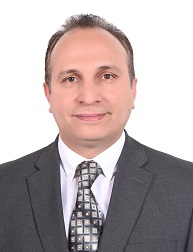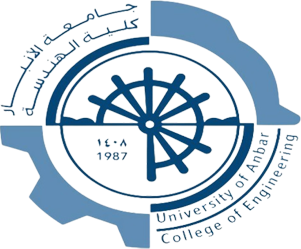
Improvement of Traffic Operation Through Intersection of Ramadi City
Improvement of Traffic Operation Through Intersection of Ramadi City
Lect. Dr. Hameed A. Mohammed
College of Engineering / University of Anbar
Traffic congestion is a major problem in cities of all sizes. It's a condition on any intersection as use increases and is characterized by slower speeds, longer trip times, and increased queuing. Intersection is one of the most complex locations in a traffic system; intersection analysis must consider a wide variety of prevailing conditions, including the amount and distribution of traffic movement, traffic composition, geometric characteristics and the details of intersection. The concept of capacity, level of service and delay are central to the analysis of intersections, as they are for all types of facilities, therefore that both capacity and level of service must be fully considered to evaluate the overall traffic operation of the intersections. While The delay is one of problems that occur in any facility of traffic. Al-Zeoat intersection in AL-Ramadi city is an important congested intersection due to its critical location on major streets. This intersection has the following characteristics:
1- It has a very high traffic volume in two approaches.
2- It is located on Major Street which intersects with two minor streets.
3- Many activities are located around this intersection.
Form Existing condition, it is obvious that this intersection work under or close to saturated condition. To solve the problem at Al-Zeoat intersection, a flyover must be adopted to reduce the number of vehicles at ground level and increase the capacity of intersection.
The main objectives of this study are:
1- Specify the peak hour volume at Al-Zeoat intersection and the distribution of traffic volume at peak hour.
2- Calculate the peak hour factor (PHF) for all approaches at Al-Zeoat intersection.
3- Evaluate the existing level of service (LOS) at the intersection under study.
4- Evaluate all proposals, which can be solved the problem of congestion at Al-Zeoat intersection and calculated the level of service for each proposal.
5- Select the best proposal that solving the congestion problem and providing a good performance within the design period.
How can Improve the Traffic Moving
It seems that the major flow concentrated along the (Al-Mohafadha St Al-Mahkama St.) approach. In addition to that, the other approach (17-July St. Al-Maeradh St.) approaches is not along a straight line. For these reasons, there is only one proposal. This proposal includes executing flyover along (Al-MohafadhaSt. Al- Mahkama St.) approach. By adopting this proposal, the expected traffic volume at peak hour which will use the flyover will be as follows:
· About 900 pc/h from Al-MohafadhaSt. toward Al-Mahkama St.
· About 1000 pc/h from Al-Mahkama St. toward Al-MohafadhaSt.
With existing of a flyover along (Al-MohafadhaSt.— Al-Mahkama St.), the expected traffic volume at ground level will be as shown in Fig. By adopting this proposal, the expected average delay at base year is (34.1) sec/veh. This delay will make the intersection work under level of service (C). tables (8 and 9) show the level of service and some significant indicators about the efficiency of this proposal.
The expected average delay will be (59.40) sec/veh. The level of service will be LOS (E) as shown in table (10). While table (11) shows some significant indicators about the efficiency of proposal.
Conclusions:
It has been concluded that, fly over at the main path of traffic movement at Al-Zeoat intersection (Al-Mohafadha St. –Al-Mahkama St.) is the best proposal to improve the capacity and traffic operation in Al-Zeoat intersection. By considering the previous mentioned results, it is concluded that proposed geometric shown in Fig. (6) reflects the accepted solution on the target year from the capacity and the performance operation point of view at Al- Zeoat intersection.


